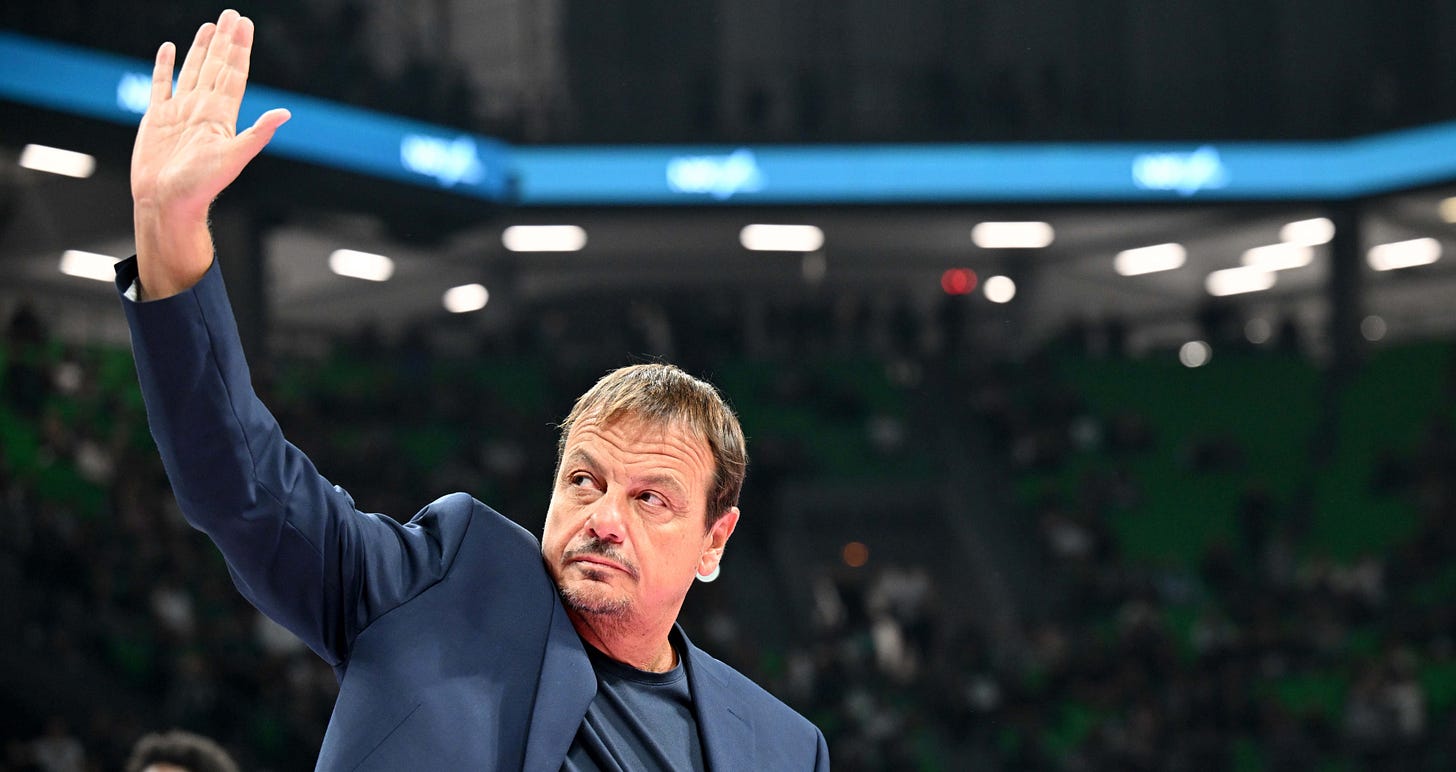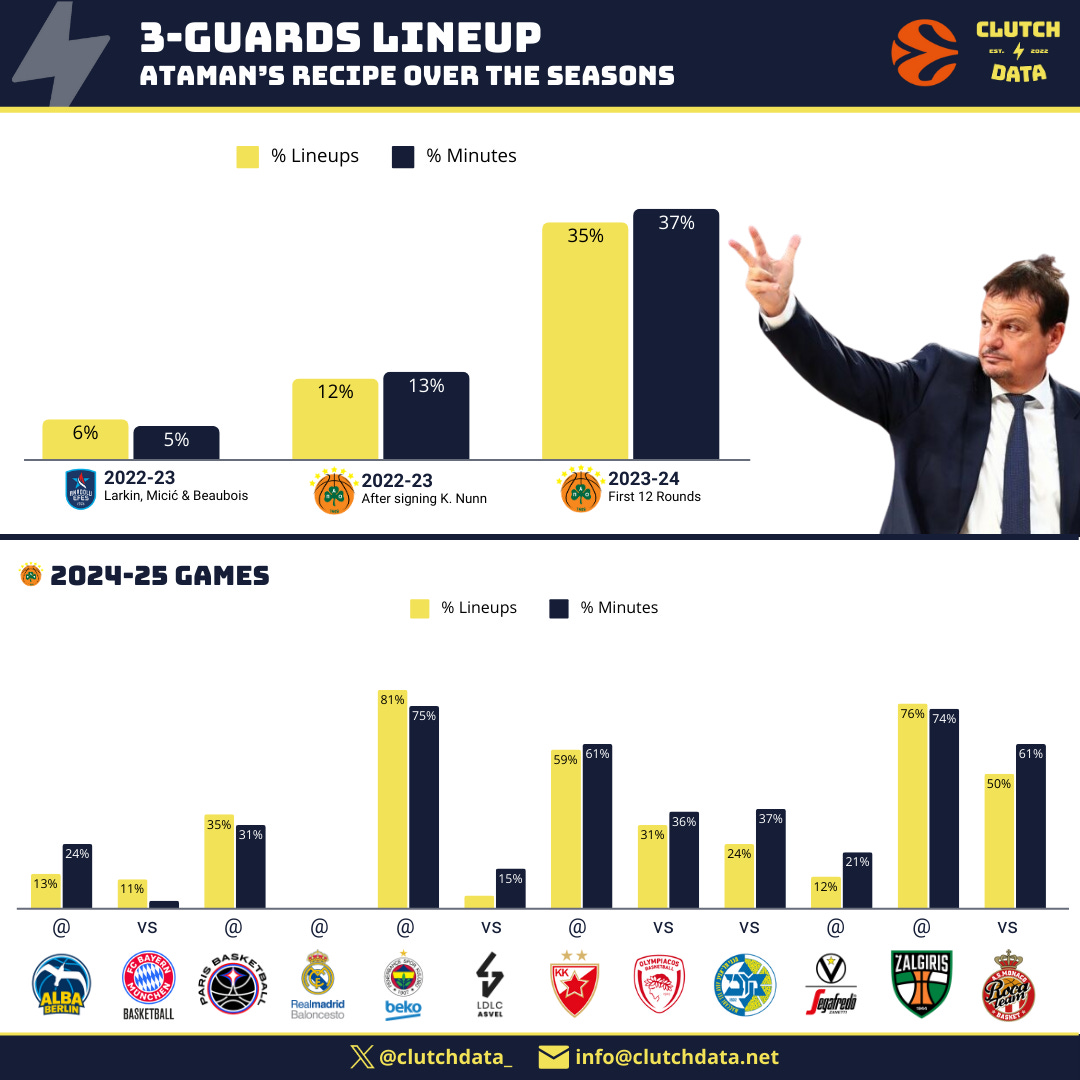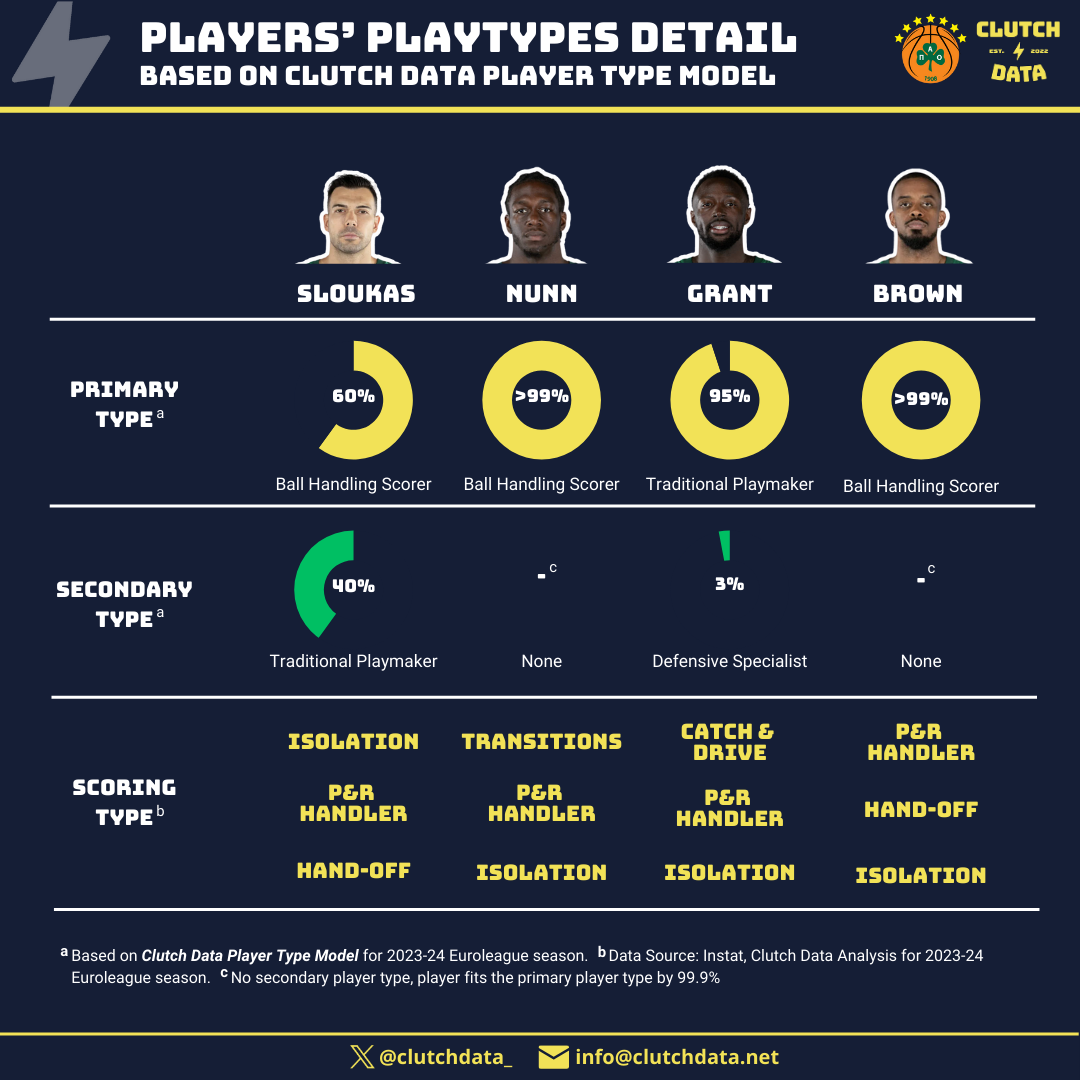🍀 Ataman's Triple-Guard Gambit: Analyzing Panathinaikos' High-Risk, High-Reward System
When Kendrick Nunn joined Panathinaikos' roster last season, Coach Ergin Ataman unveiled an audacious tactical shift: deploying three guards simultaneously with the combination of Kostas Sloukas, Kendrick Nunn, and Jerian Grant. Far from a temporary experiment, this strategy has become more entrenched this season, even after the addition of another ball-dominant guard, Lorenzo Brown, during the summer transfer window.
While this guard-heavy approach has shown flashes of brilliance, it raises crucial questions about its sustainability. How does Ataman orchestrate this delicate balance of talents? Can this unconventional system truly elevate Panathinaikos in European basketball, or do its inherent vulnerabilities outweigh its advantages? And perhaps most critically, how does Ataman maintain both tactical efficiency and player satisfaction in a rotation loaded with playmakers?
The Evolution of Ataman's Three-Guard Strategy
The three-guard lineup has been a recurring theme in Ergin Ataman's coaching playbook. During his final season at Anadolu Efes, he experimented with the explosive combination of Larkin, Micic, and Beaubois, though only for 5% of total minutes. This tactical wrinkle gained more prominence at Panathinaikos last season after Kendrick Nunn's arrival, with the Sloukas-Nunn-Grant trio sharing the floor for 13% of playing time.
However, this season marks a dramatic escalation in Ataman's commitment to this strategy. The three-guard lineup has become a cornerstone of Panathinaikos' tactical approach, featuring in 35% of all lineups and accounting for 37% of total minutes in Euroleague play. Notably, Ataman has shown particular boldness in deploying this unconventional setup against elite competition. His tactical audacity reached new heights in the matchup against Fenerbahce, where he briefly unveiled an even more radical four-guard configuration, pushing the boundaries of traditional positional basketball.
Ataman's Preferred Guard Combinations
The data from the first 12 rounds of the 2024-25 Euroleague season reveals clear patterns in Ataman's three-guard rotations. The familiar trio of Sloukas, Nunn, and Grant remains his go-to combination, logging 69 minutes together and building upon their chemistry from the previous season.
The second most frequently deployed lineup swaps Sloukas for Lorenzo Brown, with this Brown-Nunn-Grant configuration accumulating 51 minutes on the floor. Interestingly, Ataman has also experimented with other combinations: the Sloukas-Brown-Grant trio has seen 34 minutes of action, while the Sloukas-Brown-Nunn lineup has played 26 minutes together. These varying combinations suggest Ataman's strategic flexibility, allowing him to adjust his guard rotations based on matchups while maintaining the core principles of his three-guard system.
Overlapping Skillsets and Playing Styles
The statistical analysis reinforces what the eye test suggests: there's significant overlap in the playing styles of Panathinaikos' guard rotation. Sloukas (60%), Nunn (>99%), and Brown (>99%) are all categorized primarily as Ball Handling Scorers, with remarkably high correlation to this playing style. Grant stands slightly apart, showing a 95% alignment with the Traditional Playmaker profile. However, the similarities in their scoring patterns are striking - all four guards excel as Pick & Roll handlers and demonstrate strong isolation capabilities. Interestingly, Sloukas shows additional depth to his game with a 40% secondary alignment as a Traditional Playmaker, while Grant supplements his playmaking with a minor (3%) tendency toward defensive specialization.
Statistical Analysis of Three-Guard Lineup Performance
The data from the first 12 rounds reveals fascinating patterns in Panathinaikos' three-guard experiment. The Sloukas-Nunn-Grant combination emerges as an offensive powerhouse, posting an impressive 78.2% Effective Field Goal percentage and a surprisingly robust 41.5% offensive rebounding rate. This trio has proven particularly effective, significantly outperforming team averages in Offensive Rating (145.3 ORtg).
However, the Brown-Nunn-Grant lineup presents an intriguing alternative, recording the highest net rating (+16.7) despite lower raw offensive numbers. This suggests that while the Sloukas combination might generate more explosive offensive possessions, the Brown variant provides better overall balance.
Key Performance Insights
An unexpected discovery emerges when examining lineups featuring both Sloukas and Brown simultaneously. These configurations show marked deterioration in offensive efficiency, particularly in effective field goal percentage. Conversely, when either guard is paired exclusively with Nunn and Grant, offensive efficiency spikes significantly.
The three-guard strategy also impacts the team's pace, with all such combinations playing at a notably faster tempo than Panathinaikos' overall average of 72 possessions. Interestingly, despite featuring multiple ball-handlers and creators, these lineups generally show lower assist percentages than the team average, with the Sloukas-Nunn-Grant combination being the sole exception (30.0 assist rate).
Defensive Trade-offs
The defensive data reveals some concerning trends, particularly regarding perimeter defense. Counter to what might be expected from smaller, more agile lineups, opposing teams actually increase their three-point attempts and conversion rates against these configurations, especially when Sloukas is off the floor (opponent 3P% of .579 against Sloukas-Brown-Grant lineup).
Brown's presence in three-guard lineups presents an interesting dichotomy: while these units show lower offensive ratings and effective field goal percentages, they consistently demonstrate superior defensive metrics, including the lowest defensive rating and opponent effective field goal percentage among all combinations.
Conclusion: Ataman's Three-Guard Revolution - A Calculated Gamble
This deep dive into Panathinaikos' three-guard system reveals Ergin Ataman's willingness to challenge conventional basketball wisdom. What began as a modest experiment at Anadolu Efes has evolved into a defining tactical approach, now accounting for over one-third of Panathinaikos' minutes in Euroleague play.
The data presents a fascinating paradox: while the Sloukas-Nunn-Grant combination delivers explosive offensive performances, the Brown-Nunn-Grant lineup achieves better overall balance. This suggests that Ataman has successfully created two distinct tactical options within his three-guard framework - one optimized for offensive firepower, the other for all-around effectiveness.
However, the system's success comes with clear trade-offs. The increased vulnerability to three-point shooting and the diminished offensive efficiency when Sloukas and Brown share the floor highlight the delicate balance Ataman must maintain. Yet, these apparent weaknesses are offset by the system's advantages: increased pace, improved overall offensive efficiency, and tactical unpredictability.
The evolution of this strategy, from a situational tactic to a core element of Panathinaikos' identity, demonstrates Ataman's commitment to innovation in European basketball. While the long-term sustainability of this approach remains to be seen, particularly against elite competition, the early returns suggest that Ataman's bold experiment might be reshaping our understanding of positional basketball in the modern Euroleague.











